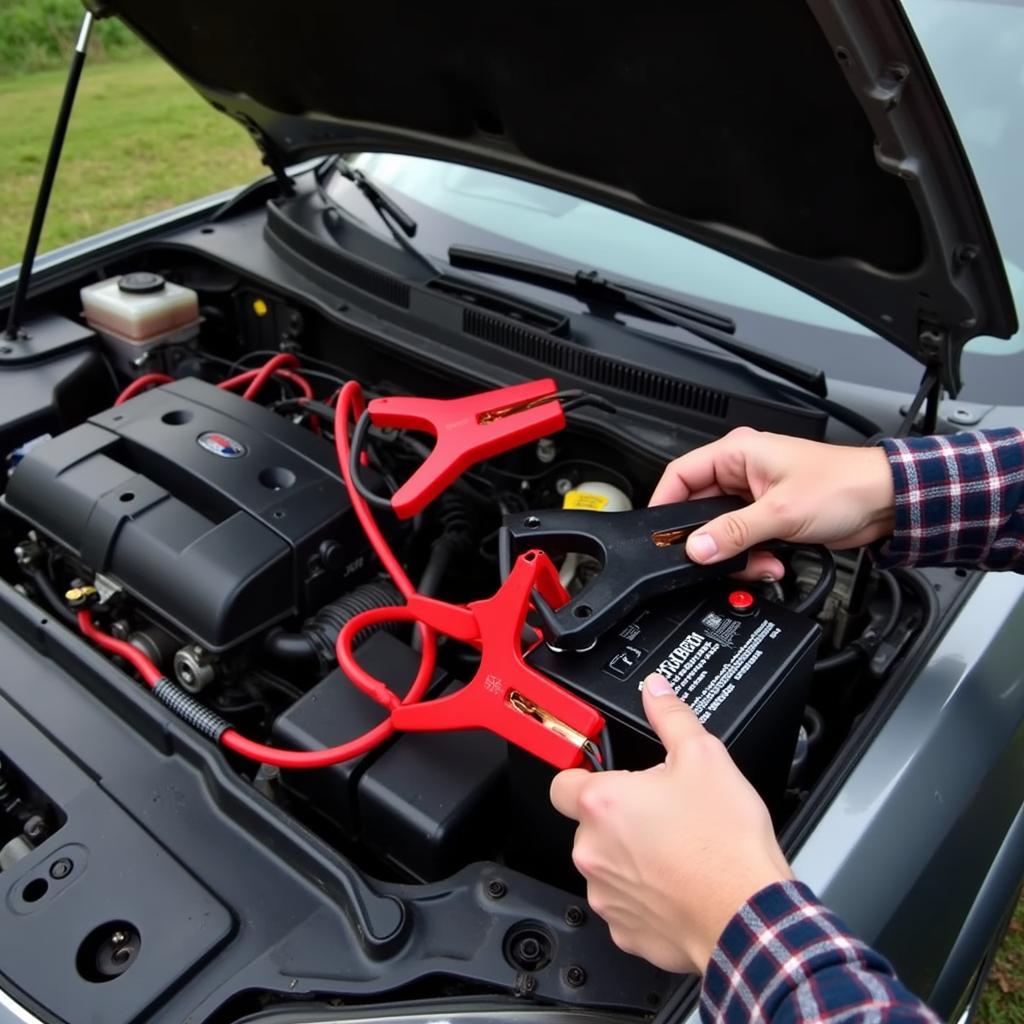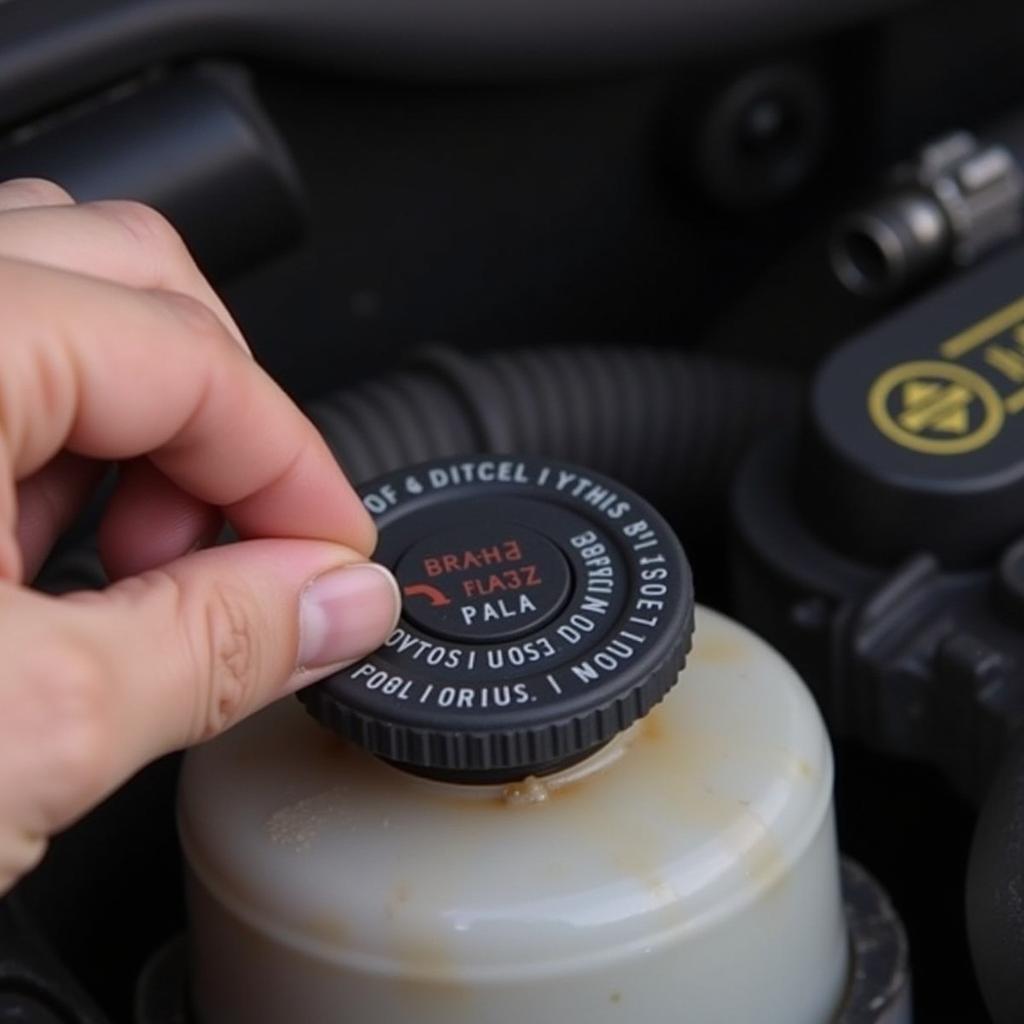My battery went dead this morning! This frustrating scenario is all too common for car owners. A dead car battery can disrupt your day and leave you stranded. But before you panic, understanding why your battery died and how to address the issue can save you time, money, and a lot of headaches. This guide will walk you through the common causes of a dead battery, troubleshooting steps, and solutions, including remote software diagnostics and programming.
 Dead Car Battery with Jumper Cables
Dead Car Battery with Jumper Cables
Why Did My Car Battery Go Dead?
Several factors can contribute to a dead car battery. Knowing the cause is the first step to finding the right solution. Some common culprits include:
- Leaving lights on: This is a classic mistake. Interior lights, headlights, or even parking lights left on overnight can drain your battery completely.
- Extreme temperatures: Both extreme heat and cold can negatively impact battery performance and lifespan.
- Old age: Batteries have a limited lifespan, typically 3-5 years. As a battery ages, its ability to hold a charge diminishes.
- Parasitic drain: Even when your car is off, certain systems can draw small amounts of power, eventually leading to a dead battery. This is known as parasitic drain.
- Faulty alternator: The alternator recharges the battery while the engine is running. A malfunctioning alternator won’t recharge the battery properly, eventually leading to a dead battery.
- Short circuits: A short circuit can quickly drain a battery and even cause damage.
- Corroded terminals: Corrosion on the battery terminals can impede the flow of electricity, preventing the battery from charging or discharging properly.
Troubleshooting a Dead Car Battery
Before assuming your battery is completely dead, there are a few troubleshooting steps you can take:
- Check the battery terminals: Inspect the battery terminals for corrosion. If they are corroded, clean them with a wire brush and a mixture of baking soda and water.
- Try jump-starting the car: If cleaning the terminals doesn’t work, try jump-starting the car using jumper cables and another vehicle with a working battery. how to replace the battery in a chevy key fob
- Test the alternator: Once the car is jump-started, have the alternator tested to ensure it is functioning correctly. battery for chevy key fob,
- Check for parasitic drain: If the alternator is working fine, you may have a parasitic drain. This requires specialized equipment to diagnose.
Remote Diagnostics and Programming Solutions
Modern technology allows for remote diagnostics and programming to identify and fix certain battery-related issues. This can be a convenient and efficient way to troubleshoot problems without having to visit a mechanic. inside of key fob for chevy Some remote services can:
- Diagnose battery health: Remote diagnostics can assess the battery’s state of charge, capacity, and overall health.
- Identify parasitic drains: Specialized software can pinpoint the source of a parasitic drain. chevy key fob replace battery
- Update software: In some cases, software updates can improve battery management and performance. how to open a chevy key fob
“Remote diagnostics offer a quick initial assessment of the battery’s health and can pinpoint potential problems within the vehicle’s electrical system,” explains automotive electrical engineer, Dr. Emily Carter.
What if My Battery Went Dead Again?
If your battery continues to die, it may be time for a replacement. “Regular battery testing is crucial, especially as your battery ages,” advises automotive expert, Mr. David Miller. He adds, “Addressing battery issues proactively can prevent unexpected breakdowns and costly repairs.”
Conclusion
Experiencing a dead car battery is a common problem. By understanding the causes, troubleshooting methods, and embracing new technologies like remote diagnostics, you can efficiently address the issue and prevent it from happening again. Regular maintenance and proactive battery care are essential for keeping your car running smoothly. If your battery went dead, don’t despair; use the information in this guide to get back on the road.
FAQ
- How often should I test my car battery? It’s recommended to test your battery every six months, especially during extreme weather conditions.
- Can I jump-start my car with any vehicle? No, ensure the other vehicle has a compatible voltage system.
- How long does a car battery typically last? Car batteries generally last between 3 and 5 years.
- What are signs of a failing alternator? Dim headlights, flickering interior lights, and strange noises from the engine compartment are potential signs of a bad alternator.
- How can I prevent my battery from going dead? Regularly turning off lights, minimizing short trips, and keeping the battery terminals clean can help prevent a dead battery.
- Is it safe to drive with a bad alternator? Driving with a bad alternator can eventually lead to a complete electrical system failure, so it’s not recommended.
- Where can I get remote diagnostics performed on my car? Many dealerships and auto repair shops now offer remote diagnostic services.


